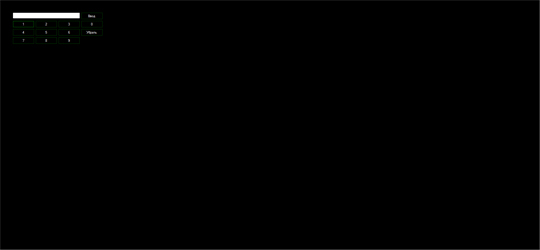Ransom.MSIL.CRYPCUTE.B
Trojan.MSIL.Filecoder (IKARUS); MSIL/Filecoder.BQ!tr.ransom (FORTINET)
Windows


Threat Type: Ransomware
Destructiveness: No
Encrypted: No
In the wild: Yes
OVERVIEW
Downloaded from the Internet
This Ransomware arrives on a system as a file dropped by other malware or as a file downloaded unknowingly by users when visiting malicious sites.
It encrypts files with specific file extensions. It encrypts files found in specific folders.
TECHNICAL DETAILS
57,344 bytes
EXE
No
15 Mar 2020
Encrypts files, Displays message/message boxes, Terminates processes
Arrival Details
This Ransomware arrives on a system as a file dropped by other malware or as a file downloaded unknowingly by users when visiting malicious sites.
Installation
This Ransomware drops the following files:
- {Malware path}\sendBack.txt - contains RSA key
- {Malware path}\secret.txt - contains RSA key
- {Malware path}\secretAES.txt - contains encrypted RSA key
- {Malware path}\data recive - contains PC name and RSA key
It adds the following processes:
- "C:\Windows\System32\rundll32.exe" javascript:"\..\mshtml,RunHTMLApplication ";document.write();shell=new%20ActiveXObject("wscript.shell");shell.regwrite("HKEY_CURRENT_USER\Software\Microsoft\Windows\CurrentVersion\RunOnce\adr","{Malware path and filename}"
It adds the following mutexes to ensure that only one of its copies runs at any one time:
- cuteRansomware
Autostart Technique
This Ransomware adds the following registry entries to enable its automatic execution at every system startup:
HKEY_CURRENT_USER\Software\Microsoft\
Windows\CurrentVersion\RunOnce
adr = {Malware path and filename}
Process Termination
This Ransomware terminates the following processes if found running in the affected system's memory:
- taskmgr.exe
- explorer.exe
Other Details
This Ransomware does the following:
- It sets the entire screen to the following:

Ransomware Routine
This Ransomware encrypts files with the following extensions:
- .png
- .3dm
- .3g2
- .3gp
- .aaf
- .accdb
- .aep
- .aepx
- .aet
- .ai
- .aif
- .arw
- .txt
- .exe
- .as
- .as3
- .asf
- .asp
- .asx
- .avi
- .bay
- .bmp
- .cdr
- .cer
- .class
- .cpp
- .cr2
- .crt
- .crw
- .cs
- .csv
- .db
- .dbf
- .dcr
- .der
- .dng
- .doc
- .docb
- .docm
- .docx
- .dot
- .dotm
- .dotx
- .dwg
- .dxf
- .dxg
- .efx
- .eps
- .erf
- .fla
- .flv
- .idml
- .iff
- .indb
- .indd
- .indl
- .indt
- .inx
- .jar
- .java
- .jpeg
- .jpg
- .kdc
- .m3u
- .m3u8
- .m4u
- .max
- .mdb
- .mdf
- .mef
- .mid
- .mov
- .mp3
- .mp4
- .mpa
- .mpeg
- .mpg
- .mrw
- .msg
- .nef
- .nrw
- .odb
- .odc
- .odm
- .odp
- .ods
- .odt
- .orf
- .p12
- .p7b
- .p7c
- .pdb
- .pef
- .pem
- .pfx
- .php
- .plb
- .pmd
- .pot
- .potm
- .potx
- .ppam
- .ppj
- .pps
- .ppsm
- .ppsx
- .ppt
- .pptm
- .pptx
- .prel
- .prproj
- .ps
- .psd
- .pst
- .ptx
- .r3d
- .ra
- .raf
- .rar
- .raw
- .rb
- .rtf
- .rw2
- .rwl
- .sdf
- .sldm
- .sldx
- .sql
- .sr2
- .srf
- .srw
- .svg
- .swf
- .tif
- .vcf
- .vob
- .wav
- .wb2
- .wma
- .wmv
- .wpd
- .wps
- .x3f
- .xla
- .xlam
- .xlk
- .xll
- .xlm
- .xls
- .xlsb
- .xlsm
- .xlsx
- .xlt
- .xltm
- .xltx
- .xlw
- .xml
- .xqx
- .zip
It encrypts files found in the following folders:
- %Desktop% and subfolders
(Note: %Desktop% is the current user's desktop, which is usually C:\Documents and Settings\{User Name}\Desktop on Windows 2000(32-bit), XP, and Server 2003(32-bit), or C:\Users\{user name}\Desktop on Windows Vista, 7, 8, 8.1, 2008(64-bit), 2012(64-bit) and 10(64-bit).)
It renames encrypted files using the following names:
- {random characters}.RekenSom
SOLUTION
9.850
15.794.06
09 Apr 2020
15.795.00
10 Apr 2020
Step 1
Trend Micro Predictive Machine Learning detects and blocks malware at the first sign of its existence, before it executes on your system. When enabled, your Trend Micro product detects this malware under the following machine learning name:
- Troj.Win32.TRX.XXPE50FFF034
Step 2
Before doing any scans, Windows 7, Windows 8, Windows 8.1, and Windows 10 users must disable System Restore to allow full scanning of their computers.
Step 3
Note that not all files, folders, and registry keys and entries are installed on your computer during this malware's/spyware's/grayware's execution. This may be due to incomplete installation or other operating system conditions. If you do not find the same files/folders/registry information, please proceed to the next step.
Step 4
Restart in Safe Mode
Step 5
Delete this registry value
Important: Editing the Windows Registry incorrectly can lead to irreversible system malfunction. Please do this step only if you know how or you can ask assistance from your system administrator. Else, check this Microsoft article first before modifying your computer's registry.
- In HKEY_CURRENT_USER\Software\Microsoft\Windows\CurrentVersion\RunOnce
- adr = {Malware path and filename}
- adr = {Malware path and filename}
Step 6
Search and delete these files
- {Malware path}\sendBack.txt
- {Malware path}\secret.txt
- {Malware path}\secreatAES.txt
- {Malware path}\data recive
Step 7
Restart in normal mode and scan your computer with your Trend Micro product for files detected as Ransom.MSIL.CRYPCUTE.B. If the detected files have already been cleaned, deleted, or quarantined by your Trend Micro product, no further step is required. You may opt to simply delete the quarantined files. Please check this Knowledge Base page for more information.
Step 8
Restore encrypted files from backup.
Did this description help? Tell us how we did.

